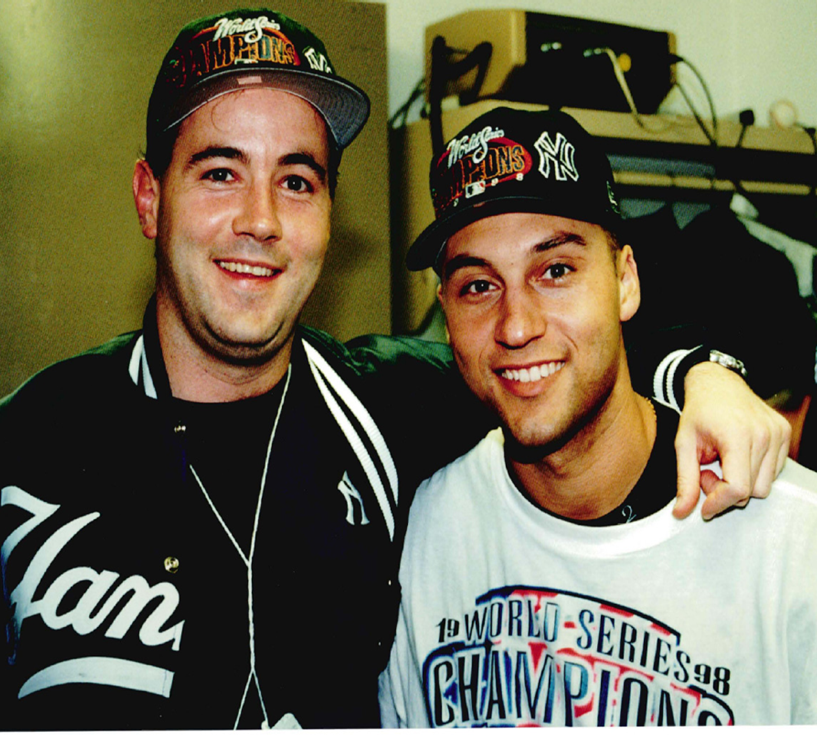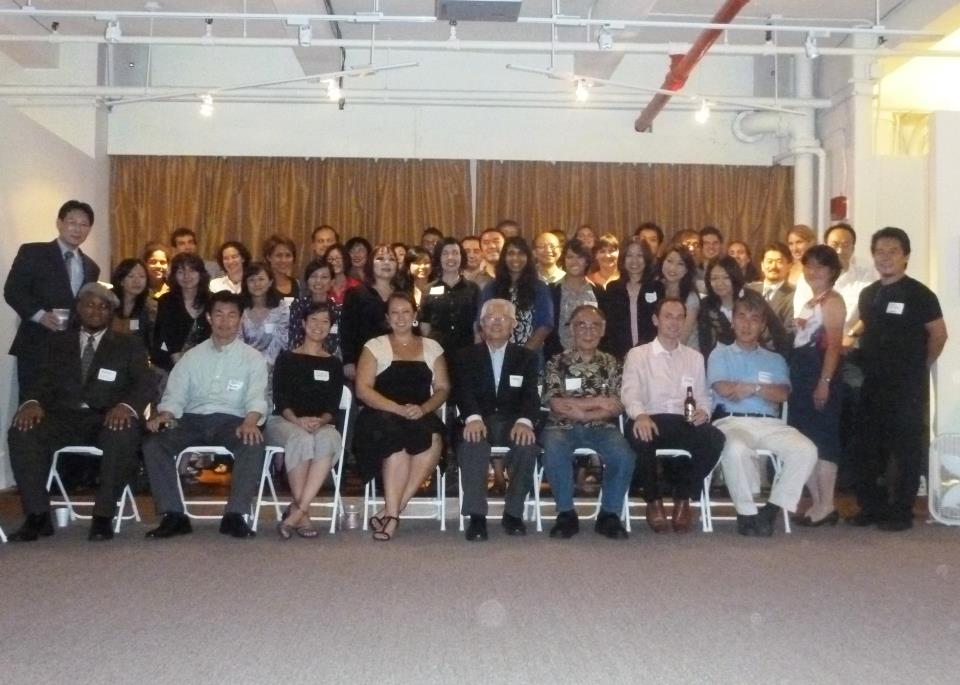Important: The official need for JET alum groups by prefecture
**************
It’s official. Soumusho (Ministry of Internal Affairs) sees great value in the JET alumni community being organized and identifiable by prefecture and would like to see such groups formed and put to better use. This according to an announcement that came through the official bureaucratic news source (iJAMP). (See very unofficial translation summary below.)
Why do they care so much about this idea? Because the local governments (i.e., the prefectures) need to see the long term benefits of JET to really make it worth it for them to continue to hire JETs and to contribute funding and resources to the program. They need to see that JET alumni are supporting and contributing to longer term economic benefits in various ways. This is the concept of Local Return on JET-vestment.
Fortunately, JET alum groups by prefecture have existed for the past year thanks to LinkedIn. And many have already joined. If you have not joined one yet, I strongly encourage you to do so now. (It also couldn’t hurt to join any of the various professional JET alum LinkedIn groups as well. Or start a new one yourself if you see a field not covered.)
Here’s the unofficial translation summaries of the official communication:
Soumusho has called on the prefectures to promote the creation of JET OB networks as a resource in their internationalization and overseas business initiatives.
To encourage this, Soumusho is allowing prefectures from this year to fund travel and other expenses for alumni out of their local allocation tax revenues, and is asking prefectures to work with municipal governments.
It is further hoped that these alumni will be a source of accurate information on Japan. And there have been many instances where alumni have gotten involved in fundraising and other support for the affected areas through their deep connections to their communities in Japan.
While there have been many groups formed by alumni according to their countries of origin, schools they taught at or years on the Program, there are few instances of groups formed by prefecture and it is difficult to really say that alumni are a resource to these areas. The importance of prefecture alumni groups was pointed out at the 25th anniversary symposium, leading to the call to form prefecture-level networks.
The notice mentioned Tottori as a good example of a prefecture making the best use of its JETs, having its CIRs act as “Tottori Hometown Ambassadors”, submitting policy proposals and contributing articles to its informational magazine. It also uses its “World Tottori Fan Club” to send out information to its ALT alumni.
WIT Life #183: 10,000 Free Flights to Japan! (and the best bonsai I’ve ever had)
************************************************
WIT Life is a periodic series written by professional Writer/Interpreter/Translator Stacy Smith (Kumamoto-ken CIR, 2000-03). She starts her day by watching Fujisankei’s newscast in Japanese, and here she shares some of the interesting tidbits and trends together with her own observations.
Last night I had the chance to attend an event at the Modern sponsored by the Japanese beverage company Suntory, for the unveiling of their newest whiskey here in the States, Hakushu. We first enjoyed a tasting of this offering, along with samples of favorites Yamazki and Hibiki. Chef Gabriel Kreuther prepared an amazing menu to pair with these whiskeys, featuring such treats as foie gras and caviar.
However, for me the best part of the meal was the Read More
JETAA British Columbia September/Fall Newsletter
The JETAA British Columbia Newsletter September/Fall Newsletter is hot off the presses!
- PDF version: http://jetaabc.ca/uploads/Main/NewsletterV16N2.pdf (6MB)
- Online version (via Issuu.com): http://issuu.com/jetaabc/docs/newsletterv16n2?mode=embed&layout=http%3A%2F%2Fskin.issuu.com%2Fv%2Flight%2Flayout.xml&showFlipBtn=true
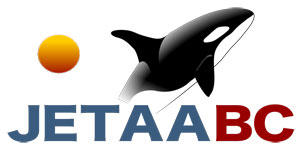
PNW JETAA’s meeting with Hyogo Governor Ido and Ryan Hart’s speech
On Friday August 26, we had the great honor of giving a presentation about the Pacific Northwest JET Alumni Association at the Hyogo Seminar, which was hosted by Hyogo Prefecture (coordinated by theHyogo Business and Cultural Center) and the Council of Local Authorities for International Relations (CLAIR). The Governor of Hyogo Prefecture, Toshizo Ido, gave a comprehensive presentation on the many great qualities of Hyogo. Consul General Kiyokazu Ota, Masaaki Akagi, the Executive Director of The Japan Local Government Center (CLAIR New York), and Ginn Kitaoka, the Executive Director of the Hyogo Business and Cultural Center all gave warm opening remarks.
During our presentation, we highlighted the great things our chapter does. Ryan Hart (Chiba-ken, Ichihara-shi, 1998-99) (former PNW JETAA President, JETAA USA Country Representative and JETAA International Vice-Chair) shared what JETAA and current JETs are doing on the national and international level, Karin Zaugg-Black shared how her JET experiences shaped her career and her personal involvement with Japan, and Erin Erickson explained how we have supported Japan Relief efforts. Leela Bilow, Jana Yamada, and Casey Mochel shared their memories of Japan and how they continue to be involved with the Japanese community after JET.
Ryan Hart very generously allowed us to share his speech with you. Below is a brief excerpt, and his full speech is below the cut.
From its inception, the JET Alumni Association has helped former participants of the JET Program “Bring Japan Back Home.” What does this mean? We help former participants network, make new friends and transition their careers. We help the JET Program by recruiting, interviewing and training new teachers for their journey. We also help our communities we live in to support Japanese culture and raise awareness of the strong ties between our countries.
On March 11, 2011, like so many other things in our lives, this changed. Instead of “Bringing Japan Back Home”, our chapters and membership have rallied not only to raise money for immediate earthquake and tsunami relief, but also to strengthen the value of our relationship with local communities and organizations in Japan.
The JET Program, since 1987, has grown into the largest and most successful work exchange program in the world. Each year, the program brings thousands of teachers to Japan to promote language education and to strengthen Japan’s relationship with a number of countries. Since 1989, our Alumni Association of former program participants, has mirrored that growth and has steadily grown as a true grassroots organization, built from our individual members up. JETAA is now 53 chapters in 18 countries. As a former chapter president here in Seattle, a former Country Representative for JETAA USA’s 19 chapters and as former Vice Chair for JETAA International, I have been truly blessed to have had the chance to work and be a part of this growth.
From its inception, the JET Alumni Association has helped former participants of the JET Program “Bring Japan Back Home.” What does this mean? We help former participants network, make new friends and transition their careers. We help the JET Program by recruiting, interviewing and training new teachers for their journey. We also help our communities we live in to support Japanese culture and raise awareness of the strong ties between our countries.
On March 11, 2011, like so many other things in our lives, this changed. Instead of “Bringing Japan Back Home”, our chapters and membership have rallied not only to raise money for immediate earthquake and tsunami relief, but also to strengthen the value of our relationship with local communities and organizations in Japan.
- Immediately following the earthquake and tsunami, JETAA USA started raised money as a national organization and chapters voted to allocate this money directly to the affected local communities. We have formed a national advisory committee for the relief fund, of which I am proudly serving as a member. To date, the JET alumni have raised over $60k in funds and we are exploring continued fundraising efforts to make an even bigger impact.
- AJET, as an organization of current JETs living and teaching in Japan, has been partnering with organizations such as Peace Boat, Second Harvest, Foreign Buyers Club and 5toSurvive to raise money and awareness of recovery efforts. The Osaka AJET Chapter has worked on food drives with Kozmoz International of Kyoto, and have driven food and supplies themselves to Tohoku from Osaka.
- Mike Maher-King, a Fukui JET, formed Smile Kids Japan, a program of visiting orphanages throughout Japan. After March 11, he partnered with an organization in Tokyo called Living Dreams to start the Smile & Dreams project for Tohoku children to make sure the needs of the orphanages and the needs of the children who rely on them are met. He recently presented at TED Talks in Tokyo.
- Paul Yoo, an Akita JET, founded the Fruit Tree Project (delivering $23,571 worth and 38,612 items of fresh fruit to Tohoku) and VolunteerAkita, which was the backbone of the BIG CLEAN project that was directly involved in the cleanup of Kessenuma. He is now working as the Home Communication Manager for two orphanages in Sendai to ensure their needs are communicated with organizations involved with relief efforts.
- Hotdogs and Hugs was an aid organization of JETs from Saga-ken, who traveled from Saga Prefecture in western Kyushu, all the way to Tohoku, raising awareness and funds for relief efforts along the way.
- Save Miyagi was founded by Canon Purdy, a JET Alumni who was in Miyagi-ken.
- Billy McMicheal, a CIR in Fukushima, has formed Hearts for Haragama, which is raising funds for the Haragama Youchien Kindergarten in Soma, Fukushima.
- Kat Geeraert, an alumnus who also lived in Soma, has started Friends of Soma to raise money for relief efforts.
These are just a few examples of the direct impact JETs and JET alumni have had. Given the number of teachers who have taught in Japan since 1985, there probably are many more individual efforts out there that we don’t know about.
What we do know is that, in light of what happened on March 11, JET alumni around the world are not only focused on “Bringing Japan Home”, but also “Bringing Home to Japan.” Collectively, we have a renewed focus not only on strengthening US/Japan relations, but also the ties with the communities we once lived, worked, and taught in. We know that our contracts we were given to us by local governments and boards of education throughout Japan, weren’t just annual contracts, they were invitations to a legacy. It should be very clear to the many communities across Japan who have invested in the JET Program since 1987 that there is a long-term value in the relationships that have been formed with the many JET Program participants that have come and gone. Whether it be through media campaigns, tourism promotion, school exchange programs, or relief and fundraising efforts, JETAA is now looking to continue our legacy in “Bringing Home Back to Japan.”
Thank you.
Ryan Hart, Ichihara City, Chiba Prefecture, 1998-99
Justin’s Japan: Interview with cartoonist Adam Pasion on ‘Aftershock’ and ‘Sundogs’
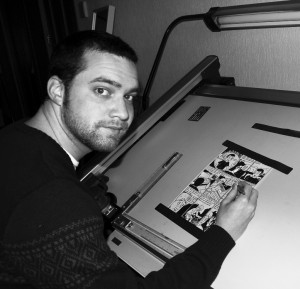
"'Aftershock' is supposed to communicate how far-reaching the influence of Japan has been on cartoonists all over the world, and how we feel in a moment like this. I guess more than an open letter, it's a get well card." (Courtesy of Adam Pasion)
By JQ magazine editor Justin Tedaldi (CIR Kobe-shi, 2001-02) for Examiner.com. Visit his page here for related stories.
For the past several years Adam Pasion has been living in Nagoya, which he calls “Japan’s best kept secret.” An editor and illustrator for RAN magazine, he is also a co-owner and English teacher of SpeakEasy Language School. As the creator of his own comic diary series Sundogs, the San Jose native was profiled in The Japan Times earlier this year, and the strip has since been collected into three books, providing a daily document of Pasion’s life in Nippon with his growing family from 2008 through 2010.
His latest project is Aftershock: Artists Respond to Disaster in Japan, a global response to the combined disasters of this year’s Tohoku earthquake, tsunami and nuclear meltdown. Edited and complied by Pasion and representing over 35 contributors from five continents, including Jeffrey Brown, Ben Snakepit, and JET alum Lars Martinson (Fukuoka-ken, 2003-06), the book shares their thoughts and feelings about a freshly devastated Japan in manga form. In this exclusive interview, Pasion reveals the inspiration for this unique project, his favorite Sundogs moments, and what’s next on his plate.
Tell us about your history with Japan. How did it cross your radar growing up?
My hometown had a pretty big and vibrant Japantown, and we would often go there and eat or go window shopping as a kid, but beyond that Japan was just a point on a map for me. In college I worked with a Japanese girl who tried to get me to go to some club for Japanese exchange students. I reluctantly went and was surprised by how much I enjoyed it—tons of delicious Japanese food and lots of cute girls. I started going regularly, and that is where I met my wife. I started taking a Japanese class, and through that class I got offered a position working in Japan for a summer. After spending a summer working here, I fell in love with the place. Several years later, my wife and I found out that we were going to be having a baby, and we decided to come have the baby close to my wife’s family here in Nagoya. Four years, two kids and a couple belt sizes later, and we are still here.
How did Aftershock come together following the earthquake and tsunami of March 2011?
Like most people out there who have any sort of connection to Japan, I felt paralyzed by the whole thing. Here were all these terrible events unfolding just a few hundred miles up the coast and there was nothing I could do about it. I had a sort of “survivor’s guilt” by proxy. When the medical teams and disaster relief groups started to come in I felt even more uneasy, realizing that it was in fact possible to help, just impossible for me to help. Every place I looked told me “just donate money for now.” I felt like I was sitting in the waiting room, waiting for the doctors to do their job. All I could do was wait, and offer to help with the hospital bills.
Then one night my brain was racing as I was trying to go to sleep, and the idea occurred to me to find a way to help out within my own skill set, which is where the idea for this book came about. I jumped out of bed and immediately fired off about 10 e-mails to the cartoonists I knew personally, and the response was 100 percent positive. I contacted Top Shelf Productions after that on a whim and they were into the idea right away. I still felt like any moment it would vanish in smoke until out of the blue I started getting tons of requests to join the project and submissions from people I had never met. The word had gotten out and was spreading quickly, and at that point I knew we were on to something. When things with Top Shelf didn’t pan out, the project already had way too much momentum to give up, which is why I decided to self-publish it. When the book was funding on Kickstarter, I actually had people thanking me for the chance to pledge money to the project. I still can’t wrap my head around that.
What are your goals with releasing Aftershock?
This has been a major point of misunderstanding from a lot of people. The main goal of this project is not fundraising for a charity. That is certainly a big part of it, but the distinction is that even if it fails to make a lot of money, I think it is incredibly meaningful in its own right. From the beginning I have described this book as a kind of “open letter” to the nation of Japan from the international comics community. It is supposed to communicate how far-reaching the influence of Japan has been on cartoonists all over the world, and how we feel in a moment like this. I guess more than an open letter, it’s a get well card. It is also a timepiece that encapsulates the popular sentiment of the world at one moment. I want all the contributors to look back on this book and remember exactly where we were and how we felt while we were still in the thick of it. I think we have succeeded in this goal. We have created a lasting piece of art that captures an important moment in time and the zeitgeist that goes along with it.
Some people have misunderstood the purpose of the project as a way to donate to the disaster. It certainly is [all proceeds from Aftershock will be donated to relief efforts in northeast Japan—Ed.], but if your main purpose is to make a donation, then there are much more direct ways to do it than to buy this book. I want the book to be successful in its aim to raise as much money as possible to help in the rebuilding process, but I also want people to actively become involved. Read the stories and see why we care so much. I want it to motivate people to join the process of rebuilding and I want it to help people feel like we are all in this thing together.
For the complete story, click here.
JQ Magazine: Book Review – ‘Aftershock: Artists Respond to Disaster in Japan’
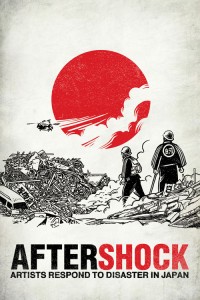
“I assumed a response to the earthquake would be grim. I was, however, relieved to see that there is a nice dose of playfulness alongside the serious, an homage to resilience and the inimitable Japanese sense of humor.” (Big Ugly Robot Press)
By Sharona Moskowitz (Fukuoka-ken, 2000-01) for JQ magazine. Sharona works at a literary agency in New York City. She is interested in fresh, new voices in fiction and creative nonfiction.
Composed in the wake of the catastrophic events of 3/11, Aftershock is something of a series of love letters to Japan written in the object of affection’s own familiar dialect: manga. Edited and compiled by American-born and Nagoya-based cartoonist Adam Pasion (Sundogs), the range of over 35 artists/admirers runs the gamut from the seasoned foreign resident to the casual Japanophile, each with an individual style and tone. The pieces are as eclectic as the artists’ experiences and personal ties to Japan, and all proceeds from Aftershock will be donated to relief efforts in northeast Japan.
When I first approached the anthology I wasn’t sure what to expect though I braced myself for gravity. Even in the form of manga, I assumed a response to the earthquake would be grim. I was, however, relieved to see that there is a nice dose of playfulness alongside the serious, an homage to resilience and the inimitable Japanese sense of humor.
For example, “I Was a Teenage Otaku” by JET alum and Tohonharu cartoonist Lars Martinson (Fukuoka-ken, 2003-06) traces the trajectory of the author’s interest in manga and anime, a hobby which “provided the spark that made [him] want to get out there and really explore” and eventually led to his move to Japan as an exchange student. Though his passion for the art form eventually waned, it gave way to a much broader appreciation of the Japanese arts in general.
JET alum George Rose quoted in NYT feature on Hideki Irabu
JET alum George Rose (Fukushima-ken, 1989-91), former interpreter for Hideki Irabu as well as former JETAA NY President, is quoted in a Sunday, October 9 feature article “Irabu Got Lost on the Way Back“) in the New York Times about Japanese pitcher Hideki Irabu who recently committed suicide. The article gives the impression that George was one of the few U.S. baseball colleagues who actually got to know Irabu personally.
Below is a link to the full article along with the quotes by George:
“When I saw him last summer, he told me he was having a midlife crisis,” said George Rose, who befriended Irabu when he worked for two years as his interpreter on the Yankees. Rose then repeated what had been a kind of conventional wisdom about the Irabu: he had a big heart, but could be his own worst enemy.
**********
“He was kind of searching for what to do next,” said George Rose, his old interpreter, “and he never did.”
For additional background on George, here’s a link to a 2008 JETAANY Newsletter interview with George Rose (“Pride of the Yankees: Far East Edition“) by Stacy Smith (Kumamoto-ken CIR, 2002-03).
In a speech on October 7 at the U.S.-Japan Council Annual Conference, U.S. Secretary of State Hillary Clinton lauded the JET Programme for its vital grassroots relationship building, cited the JET alumni community’s role in raising money for earthquake/tsunami relief and cited Monty Dickson and Taylor Anderson as models of the kind of cross-cultural exchange that is so important to successful relationships between countries and cultures.
Here is a link to Secretary of State Clinton’s speech on the State Department’s website along with a video. http://www.state.gov/secretary/rm/2011/10/175151.htm
Below are a few excerpts followed by the full text of the speech.
“More than 35,000 people have participated in exchange programs sponsored by our two governments, programs like the Fulbright and the Japan Exchange and Teaching Program, known as JET.”
***********
“[A]lthough these ties have already benefited both of our nations, they are not self-sustaining. We have to continue to invest in them.”
***********
“The American people are proud to count Japan among our closest friends. I recently heard the story of an Alaskan named Monty Dickson who taught English at Yonesaki Elementary School as part of the JET program. While in Japan, Monty came to love Japanese poetry, and on the morning of March 11th, he had translated a poem by Shiba Ryotaro into English, and it read: “There’s nothing as beautiful as dedicating one’s life for a cause.” And just a few hours after writing those words, Monty Dickson was swept away in the tsunami. In fact, both of the Americans who died that day, Monty and Taylor Anderson, were teachers in the JET program. Their lives and their cause are part of the fabric of the friendship that we now share. The Dicksons, the Andersons, and the entire extended family of JET alumni have been working to help the communities that both Monty and Taylor lived in and grew to love.”
***********
“The U.S.-Japan alliance is the cornerstone of a system in the Asia Pacific that has underwritten peace, stability, and prosperity for decades. And the close connections built by the Monty Dicksons and the Taylor Andersons and the U.S.-Japan Councils, those are the foundations that not only keep the cornerstones strong but keep building higher and higher.”
***********
Remarks at the U.S.-Japan Council Annual Conference
Remarks
Secretary of State
Posted by Ashley Thompson (Shizuoka-ken, 2008-2010) of Surviving in Japan: without much Japanese and Lifelines columnist for The Japan Times.
6 weeks. I can’t believe it has already been about 6 weeks since our dear daughter Ai-chan joined us in world. It’s mostly been a blur of sleep, insomnia, diaper changes, incessant feeding, incredible soreness and lots of baby time. But, reality shows up sooner or later and it’s time for me to try and start adjusting back into some sort of routine (while I hope that our child also figures out some sort of routine in the coming weeks).
I’ve mulled over sharing this experience many times, as I want to present it as objectively as possible, because to be honest I came away from the experience completely traumatized. NOT because of the fact I gave birth in Japan, just the labor and childbirth process itself. So, I’ll do the best I can here, and please understand that this is only my experience. Everyone has completely different birthing experiences, no matter where they are in the world, and even in Japan, your experience may differ depending on your doctor or midwife, and various other factors.
However, I don’t believe there is any reason to fear giving birth in Japan (and I do speak from personal experience now!), so rest assured that as long as you find a doctor or midwife you like and (hopefully) trust, you should be fine (well, as fine as you can be going through this kind of experience…)
*******
Our daughter was due on August 22nd, but the day came and went rather uneventfully. No baby.
I was tired of being a giant whale in the ridiculous heat of summer, so was eager for the baby to hurry up and come out. My husband and I did what we could to “prepare” (although in hindsight it was worthless – how can you “prepare” if you’ve never given birth before? You have no idea what it’s going to be like or feel like), and basically waited, while visiting the doctor twice that week for fetal monitoring. [Side note: After 40 weeks in Japan you typically visit the doctor twice a week.]
On Friday, the 26th, we were at the clinic again for another heart rate test of the baby in the early afternoon, and the doctor said I was 2 cm dilated and that I would likely go into labor within the next couple days.
Later that evening, as my husband and I ran errands, I started getting random contractions. I’d never felt a contraction before, and the doctor had asked me at the past few appointments if I had felt any contractions yet, but my answer was always “no.”
I figured the contractions I was having were just the practice kind preparing my body for labor, so didn’t worry too much. We ate dinner at home, watched some TV and went to bed (I was still having irregular contractions).
The contractions continued over the next couple hours, though I just kept trying to sleep, as I was incredibly tired. My husband, on the other hand, was wide awake during all this and timed the contractions. They actually became regular, and went from 10 minutes to 5 minutes apart in the course of a few hours. I also started bleeding a little, and so after calling the clinic, the nurses told us to come in. — CLICK HERE to read the rest of the post.
WIT Life #182: Japan Connections where you Least Expect them
***************************
WITLife is a periodic series written by professional Writer/Interpreter/Translator Stacy Smith (Kumamoto-ken CIR, 2000-03). She starts her day by watching Fujisankei’s newscast in Japanese, and here she shares some of the interesting tidbits and trends together with her own observations.
My latest International Visitor Leadership Program travels bring me to Riverside, California for the first time, host of the recent Sister Cities International conference highlighted here in JetWit. My group and I are staying in the lovely Mission Inn (referenced in the Sister City write-up), a national historical landmark established in 1876. Today we took part in a tour of the facility, and I was surprised to find out about its Japan connection!
Founder Frank Miller wanted to create a resort hotel for Riverside, which by the 1890s was Read More
Return on JET-vestment: AJET Chair Matthew Cook on the recent 25th Anniversary JET Programme Symposium
*****************
Originally posted to the AJET website by National AJET Chair Matthew Cook (Osaka) who was an attendee of the 25th Anniversary JETProgramme Symposium, where, notably, JET alum Jim Gannon (Ehime-ken, 1992-94), Executive Director of the Japan Center for International Exchange (JCIE/USA), was invited to speak about the JET Programme and the JET Alumni Association.
It’s been a significant month in the world of the JET Programme.
On September 8th, the ministries hosted a commemorative symposium at the University of Tokyo to discuss 25 years of the JET Programme; what it has accomplished, and what challenges it faces today. The symposium featured many notable
speakers, such as United States ambassador to Japan, John Roos, and Ms. Yoko Kimura, the Chair of the Board of Directors of CLAIR.
On behalf of AJET, myself and AJET council members Mark Noizumi (treasurer) and Amelia Hagen (Block 10 rep) attended. After brief opening statements by the ministry heads, many speakers were given the chance to spotlight JETs’ achievements, and voice issues pertinent to the program.
One issue, for Japan as a country, that repeatedly came up was the fact that the number of Japanese students who study abroad or attend universities in foreign countries has been on a steady decline for years. This is particularly troubling in light of Japan’s efforts to globalize as more and more businesses are enforcing English as a required standard.
A highlighted concern for the JET Programme itself was the increasing number of Boards of Education who hire ALTs privately, or through recruiting companies other than JET. One of the many challenges the programme faces is how to best promote the value of what we do, and the return on investment that we can provide to the communities we serve.
As the Chair of AJET, I am fortunate enough to work with many people who have done amazing things with their time on JET. As such, I am aware of the many benefits of the JET programme that are sometimes overlooked. However, this made me question…. is everyone else?
How do we as JETs promote the value of what we do and the return on investment that we provide to the communities we serve?
For example, did you know that over 20 of the employees at the U.S. Embassy in Tokyo are former JETs? Did you know that after the March 11th disasters, current JETs raised an estimated ¥140,000,000 yen towards the relief efforts? These are only two examples of ways that JETs have given back to Japan. The benefits of JET are vast, and the elimination of the program would have far reaching consequences.
Toward the end of the day, the governor of Kyoto made an interesting point that stuck in my mind. He said that he believes the competition of privately hired JETs and the decrease of requests for JETs is actually a good thing! He reasoned that this competition would serve as a stimulus for positive change in our programme to become better and to show more quality than it ever has in the past.
That’s when I realized…. We ARE the positive change in the system now. As we speak, AJET has been working on more ways to provide resources to make JETs better teachers. Ways to learn Japanese more fluently. Opportunities to develop ourselves professionally in the field of education.
Not only that, but we’re finding better ways to connect to each other online and in person via social media and larger scale, better planned volunteer efforts! We’re finding better ways to let JETs VOICE their opinions and concerns to the not only the ministries, but to the people we interact with in our communities and workplaces everyday!
So, do we need to wait for the ministries to “save JET”? Should we wait for JET Alumni to prove that the Programme is a world-renowned program, that should be held in the highest regard so that we have luck with future employers?
No.
We need look no farther than to ourselves for this. We ARE the future of JET. Current JETs lay the ground-work for our successors who come next to fill our shoes.
I feel honored to have attended a symposium of so many people who have made amazing contributions to the JET Programme, and who all have a stake in its survival. I think we should take this symposium as a reminder that now
is the time for us to make more of this experience. The time is now for us to work together to be something MORE. I personally can’t wait to get started making that happen. I hope you’ll join us.
Matthew Cook
National AJET Chair
Symposium Speakers
Jim Gannon
Former JET and Executive
Director of the U.S.
based Japan Center for
International Exchange.
Keiji Yamada
Governor of Kyoto
Prefecture, President of
the National Governors
Association
Masao Niisato
Professor at Tokyo
International University
Angus Lockyer
Chair of Japan’s Research
Centre, University of
London
Jin Ah Kim
Director of International
Cooperation Department,
Governors Association of
Korea
Yoko Kimura
The Chair of the Board of
Directors, CLAIR
Akira Nakamura
Emeritus Professor
*****************
With increased potential for budget cuts to the JET Programme and to JETAA and additional prefectures opting to use private ALTs rather than JETs, it’s good to see an example of a prefecture making effective use of JETs to provide significant Return on JET-vestment.
Toyama Prefecture has for the past two years been using its CIRs & ALTs to promote tourism through their Twitter and FB accounts or other means. More explanation is available in Japanese at: http://www.pref.toyama.jp/cms_press/2011/20110915/00007707.pdf
This year, according to this notice, they were planning to take their six ALTs (4 Americans) and two CIRs (both Americans) around to the big tourist attractions and then have them put out word-of-mouth to promote them, through Facebook, Twitter, blogs, or actual word-of-mouth after they go home.
There’s no reason other prefectures can’t adopt similar programs with their JETs and CIRs and why JETs and JET alums themselves can’t initiate this kind of activity.
While it’s relatively easy for local governments to find native English speakers to teach in their schools, it’s much harder to bring in teachers who will feel a connection to the community that lasts a lifetime and continues to provide tangible and intangible benefits over the long term. And that is the power of the JET Programme.
*************
Thanks to Matt Gillam, Senior Researcher at CLAIR-NY (aka Japan Local Government Center), who attended the recent Sister Cities International Conference in Riverside, CA, for writing up a little something about the conference and noting how JETs were present in several ways.
A little context: Back in July, several JET alum reps including Mike Shu, Jessyca Wilcox and myself along with Matt met up with Sister Cities International when we were in D.C. for the JETAA USA National Conference to talk about potential collaboration. The topic was subsequently discussed with JETAA chapter reps in a session at the JETAA USA National Conference.
“I just got back from the Sister Cities Pan-Pacific conference in Riverside, where we had a chance to gauge interest in the idea of making alumni available to cities to help out with their sister city relationships. The reaction I got was that there is definitely interest, and not just limited to sister cities matters. There seems to be quite a need for help with other visitors from Japan as well, where cities lack people with knowledge of not just language, but also cultural and social norms.
Mark Juloya and Russell Iriye, from JETAA Southern California, came for the conference and Russell participated in a session on “Best Practices in Youth Programming”, where he talked about JET & JETAA. In the Q&A after his presentation, I had a chance to mention the alumni as an available resource for cities and a couple of people were quite interested. Overall, as I said, the response was positive, and Mark and Russell were also great exemplars of the kind of talent JETAA has to offer.
On Sunday, Sendai City put on a display at the most popular spot in town (the Mission Inn) to talk about how the city is recovering and to thank Riverside for all its support ($584,000 in donations, plus the area dispatched USAR (Urban Search and Rescue) teams etc. to the region immediately following the disasters). Audrey Shiomi, a former CIR in Sendai City, also came out to help for the day. Audrey is one of those former JETs who have taken advantage of the program to revisit their former communities in Tohoku, and another great example of how valuable alumni can be to their former employers.
And one more person to mention is Renay Loper, who’s with the Japan Foundation’s Center for Global Partnership now. She was there with a Japanese colleague to attend the conference, since CGP was helping to fund it.
JETs are everywhere.”
Matt Gillam
JLGC, New York
New New Jersey JETAA Subchapter
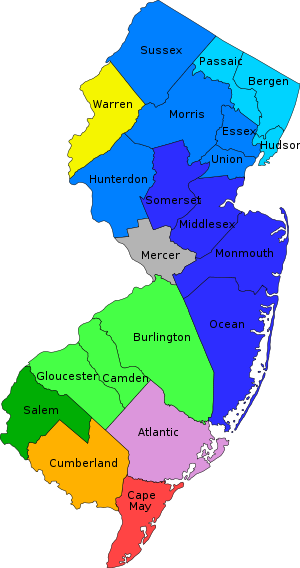 Via JETAA NY:
Via JETAA NY:
JETAA NY is excited to kickstart a new subchapter on the other side of the river – in New Jersey!
Those interested can join the Facebook group and read about our NJ Subchapter Representative, Rachelle de Leon, at http://jetaany.org/about/contacts/ (scroll to the bottom).
Rachelle can be contacted via the Facebook group and/or email at njrep [at] jetaany.org.
Return on JET-vestment: JETAA NY joins Kyushu Battenkai for Fall Gathering
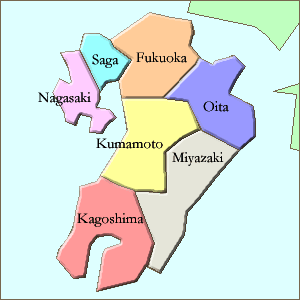 Via JETAA New York. A great example of JETAA providing Return on JET-vestment at the local government level:
Via JETAA New York. A great example of JETAA providing Return on JET-vestment at the local government level:
Terrific Turnout for Kyushu Battenkai’s Fall Gathering
“With over 60 people in attendance from both JETAANY and the Kyushu BattenKai, we enjoyed another successful joint event with the Kyushu expat organization (see the picture from the end of the evening above). We look forward to working with them again.”


